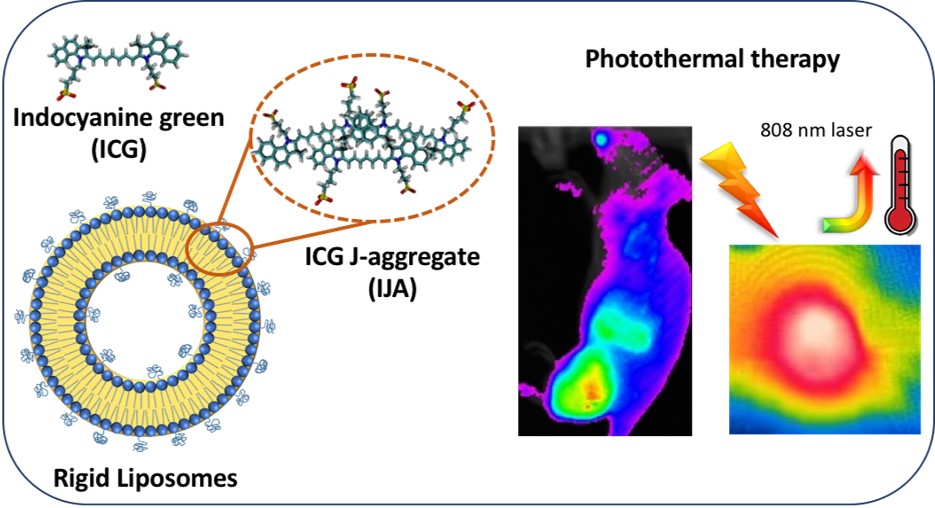Liposome-Indocyanine Green J-Aggregates as Biodegradable and Highly Stable Photothermal Agents
Dr. Wafa Al-Jamal1) – Queen’s University Belfast, UK
People involved
Dr. Taher Hatahet (collaborator) – Queen's University Belfast, UK
Abstract
Photothermal therapy has been proposed as a safe and effective approach to treat cancer. Existing non-biodegradable photothermal agents, such as gold-based nanomaterials, exhibit slow liver clearance, which raises safety concerns on the long-term. This project aims to develop a biodegradable phospholipid-based photothermal agent that will be cleared from the body following systemic administration. Indocyanine green (ICG) is an FDA-approved near-infrared (NIR) fluorescent dye that has been used in optical imaging, however, its rapid photodegradation has limited its use as a photothermal agent. To overcome this issue, our group has loaded clinically-approved ICG, into liposomes in the form of J-aggregate (parallel arrangements of the monomeric ICG molecules, IJA) that preserved the liposome characteristics while exhibiting superior photothermal stability in tumor tissues upon multiple irradiations with 808 nm laser.1)2)

Figure 1. Graphical abstract.
In the current project, we will extend our investigation to assess the effect of lipid bilayer composition, surface charge and coating on liposomal IJA formation and its characteristics as a photothermal agent suitable for cancer therapy in vivo. Next, a range of our liposomal IJA formulations will be tested in cells to assess their therapeutic efficacy in combination with a NIR laser to kill cancer cells, cultured as monolayers or three-dimensional spheroids. Finally, we will determine the tumor targeting capabilities and liver clearance of the optimal liposomal IJA formulation in tumor-bearing mice following intravenous administration, providing preliminary data on their tumor imaging ability and safety that will warrant further in vivo investigations. The project is expected to provide in-depth knowledge of the role of lipid bilayer properties on the in-situ formation of photothermally stable nanosized IJA and their photothermal activity in vitro, tumor targeting and clearance in vivo. With both liposomes and ICG being clinically approved, our developed liposomal IJA constructs will offer a biodegradable and clinically relevant theranostic platform, enabling multimodal (fluorescence and optoacoustic) imaging and combinatory (chemo- and photothermal) cancer therapy.
Benefit for the community
Photothermal therapy offers a safe localized cancer treatment with minimum side effects. Furthermore, it has potentiated immunotherapy to tackle incurable cancer metastasis. To date, there are no clinically approved photothermal agents for systemic administration. Gold-based nanomaterials exhibit superior photothermal stability with near-infrared laser; nevertheless, their slow biodegradability and hepatic clearance from the body raise long-term safety concerns, particularly upon multiple injections. In this project, we will engineer biodegradable and highly efficient photothermal agents (lipid-based IJA formulations) suitable for systemic administration and ideal for human use.


